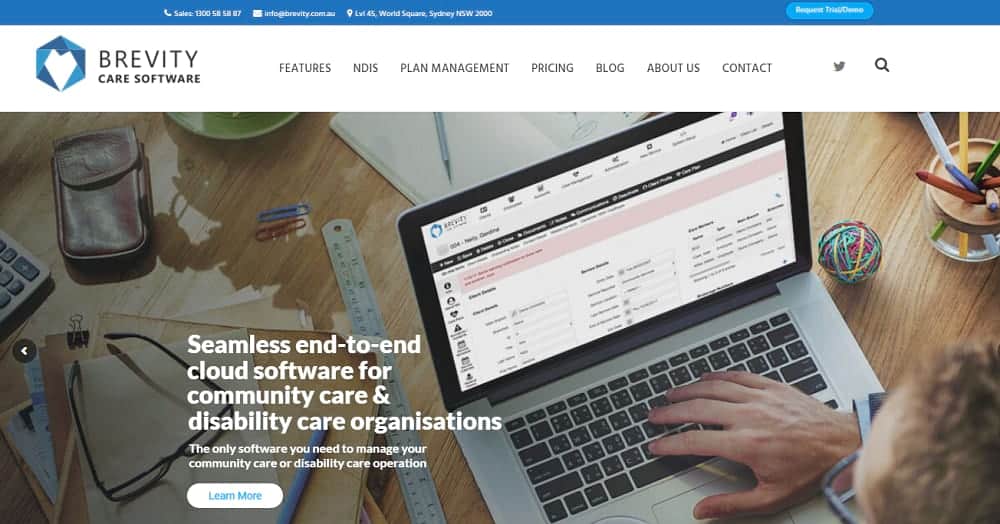
If you are an HCP aged care service provider, the way you are paid for the services you offer has changed.
From September 2021, all home care providers need to claim for the actual cost of services delivered, rather than the total amount of funding.
We’ve put together this short guide to explain the key changes, and how you can ensure you receive the money you are entitled to claim.
What are the HCP improved payment arrangements (IPA)?
The changes to improved payment arrangements (IPA) were brought in to help the Government manage surplus funds more efficiently and help older Australians live independently in their homes for longer.
The main difference for home care package (HCP) providers is that rather than receive the full amount of funding for every resident, they now have to claim for the services they provide. This brings home care into alignment with other Government-funded schemes like the National Disability Insurance Scheme (NDIS).
According to the Government, home care providers hold $1.5 billion of HCP funds that aren’t being spent. By changing the way surplus funds are managed, it will ensure the money is there for older people if their circumstances change.
When were the changes introduced?
The IPA changes were introduced in two phases. The first phase was introduced in February 2021, when providers still received the full amount of funding each month, but in arrears.
The second phase came in on 1 September 2021. We’ll discuss the changes that were introduced in this phase below.
What are the HCP IPA changes you need to consider?
There are five fundamental changes to improved payment arrangements, which will impact how you claim for the home care services you provide.
1. Invoicing is based on services delivered in the last month
HCP providers need to invoice the Government for services delivered in the past month and will be paid in arrears. For example, if you invoice for services you delivered in September, you will be paid for these services the following month.
As before, you can claim through the Services Australia portal, or using a paper claim form.
You need to provide a separate invoice for each care recipient you provide services to. The good news is that you don’t have to provide a breakdown of each service you provide, just an aggregated invoice amount.
2. Each care recipient will have their own home care account
In September 2021, Services Australia created a home care account for each home care recipient.
Each care recipient is still entitled to a certain amount of funding. Any unspent funding will be held in their account where it will continue to accrue.
These funds will be made available to the care recipient should they need them.
3. HCP providers must report any unspent funds
If you have any unspent funds, you must report them to the Government by 31 December 2021. These must be reported individually for each recipient.
Reporting can either be done through the Services Australia portal or through a paper claim form.
From January 2022, you must report on unspent funds on a monthly basis.
4. HCP providers can opt-in to return funds
You have the option to return any unspent surplus funds you hold to the Government. If you agree to opt-in to this arrangement, the Government will gradually reduce the unspent funds you have over time.
You may initially think there is not much benefit to doing this. However, the critical advantage is that if you do this, you don’t need to provide further reporting on any unspent funds. So, if you have a care recipient with no unspent funds, it’s something you may want to consider to save time and paperwork.
If you want to opt-in, you can do this up until 28 February 2022. You do this on an individual basis for each recipient, and once opted in, you can’t opt out.
You don’t have to tell a care recipient if you have opted in on their behalf, but you must let them know your decision if they ask.
5. There is a 70-day limit in place
The new IPA changes also introduce a 70-day time limit on retrospective care changes.
This means that you need to submit any claims and events before the 70-day window; otherwise you may not be entitled to funding.
The 70-day time limit also comes into effect if a care recipient moves providers. For example, let’s say a care recipient has moved from Provider A to Provider B. Provider A has up to 70 days to access funding, while Provider B can access unspent amounts from the care recipient’s start date, and then 71 days after leaving Provider A.
In conclusion: how IPA is affecting home care package providers
We hope this guide has given you an introduction to the IPA changes and how they may affect the services you offer.
The Services Australia website has more information about how HCP providers may need to adapt, including sample payment files and resources for staff to help them understand the new procedure.
The IPA changes may appear daunting at first glance. However, the amends to the system will provide you with increased transparency as well as data that can help you become more efficient over time. If you need extra support or aren’t sure if your current in-house software can handle the recent changes, please get in touch with us – we’d be happy to help.

Need Help with IPA Reporting & Simplifying Compliance as a HCP Provider? Let Us Help
Our intuitive software has been designed especially for HCP and aged care providers, giving you the tools you need to make your job easier and your clients’ lives better.
Brevity lets you manage your client’s records securely and send invoices on the go, making it easier than ever to keep on top of the IPA changes.
Contact us today to set up your free demo and see how we can give you peace of mind and ensure you get the funding you are entitled to.



